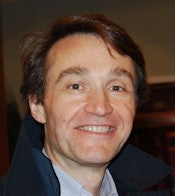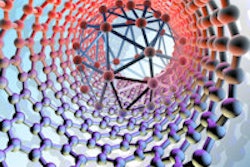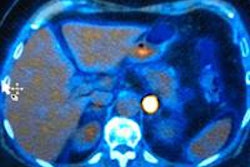
The European Association of Nuclear Medicine (EANM) congress is under way in Milan. Dr. Arturo Chiti, the committees coordinator for EANM, shares his insights about the changing face of nuclear medicine and what's required from specialists these days.
Doctors graduating in any European university between the two world wars of the 20th century would most probably be able to treat their patients to the best of their knowledge without a real need for continuing education. They had everything they needed in their books and their personal experience.
 Dr. Arturo Chiti.
Dr. Arturo Chiti.Developments in science dramatically changed this scenario in less than a century. The fast pace of science is even faster in medicine because the access to information we have these days, thanks to information technology, make an impressive amount of data available to the great majority of doctors in Europe. A student starting medical school this year will require a significant update of her knowledge by the year she graduates. Today, well-trained and experienced specialist physicians are able to provide optimal patient care thanks to continuing medical education and continuing professional development programs.
Different skills are required depending on the different professional roles: General practitioners are required to direct a patient to the right specialist when it is needed, while medical specialists are required to have great experience and deep knowledge of their field of interest. In particular, doctors working in big hospitals are used to relying on their colleagues for any specific clinical need that is outside their field of interest.
Communication between specialists is an important issue when addressing personal and professional skills. An interdisciplinary approach to clinical problem solving is rapidly and adequately achieved in large hospitals, particularly within academic and research facilities, rather than in smaller and less developed centers. Efforts must be made to improve harmonization of practices.
This process is also true for medical imaging, and it is reflected in the appearance of an imaging specialist for a particular context, organ, or region, such as the brain or the heart.
Economic factors are playing a major role in healthcare, and specific skills are required to enhance care quality and efficacy. A well-trained, experienced specialized doctor is always able to give more appropriate care to the patient when compared with a less educated and experienced colleague. The balance between the time required to train a good doctor and the cost to achieve this goal is still a matter of discussion. The level of knowledge required for a medical imaging specialist is rising because many more imaging modalities are available, and they must be interpreted within the clinical context of the patient's disease.
Training is still focused more on technology than on clinical interpretation of images, but it must change. To be able to discuss a case as a peer with clinical colleagues, an imaging specialist needs to develop a deep knowledge of the clinical contexts in which he is required to use imaging.
Doctors' education should be taken back to the clinical arena also in medical imaging, leaving to other professionals the understanding of the technical aspects of the technology used to produce imaging. Medical doctors do need a general education on the technological aspects of their daily work, but only what is required to be able to understand problems and pitfalls that may appear in images. The rest should be left in the expert hands of physicists, engineers, chemists, pharmacists, biotechnologists, radiographers, technologists, and nurses working together for the patient's care. Obviously, an effort has to be made to harmonize education of the different figures working in the field of medical imaging.
In this view, it must be stressed that the modern medical imaging specialist must be able to use different imaging technologies. Multimodality imaging is a reality and, particularly in nuclear medicine, it is mandatory to be able to interpret the signals coming from different imaging modalities.
Also, the availability of several radiopharmaceuticals requires the molecular imager to be familiar with the different biological processes that might be imaged with different biological probes, such as radiopharmaceuticals. Nuclear medicine specialists must choose the right radiopharmaceutical for the individual clinical question and must be able to evaluate what is better for a particular clinical context, from diagnosis to tumor characterization, target identification, and evaluation of therapy response.
Nuclear medicine is not only imaging but involves the therapeutic applications of radiopharmaceuticals. Many patients can benefit from the use of specific radiopharmaceuticals able to target different tumors and to treat diseases of the thyroid and of the joint, for instance. For the effective use of these drugs, a strong clinical background is needed to safely take care of the patients in their whole clinical dimension.
Radiation protection of patients, staff, and environment is another skill demanded of nuclear medicine specialists, leading to safe handling of unsealed ionizing radiation.
The EANM, the European Union of Medical Specialists (UEMS) Section, and the European Board of Nuclear Medicine are working together to maintain a constant update of the curriculum of nuclear medicine trainees. Goals involve optimization and harmonization of training amongst European countries. This will help them to face national and international challenges during their careers as nuclear medicine specialists.
It is well known that fewer physicians are available in many European countries, most of the time because of the limited number of students allowed every year to enter medical schools. This causes a strong competition between different medical specialists and makes it difficult to motivate undergraduates to start a career in nuclear medicine.
This is why scientific societies are attracting medical students to their congresses. This year at the EANM meeting in Milan, a dedicated initiative for students of medical faculties at large was organized. This means that not only medical students, but also students from other faculties linked to nuclear medicine are welcome. The program is available at www.facebook.com/EANMOffspringDay. We do really hope that this initiative will be successful in next years also and will bring new ideas and enthusiasm into the fascinating world of nuclear medicine.
Dr. Arturo Chiti is the director of the nuclear medicine department at the Istituto di Ricovero e Cura a Carattere Scientifico (IRCCS) Humanitas in Milan and the committees coordinator of the European Association of Nuclear Medicine.
The comments and observations expressed herein do not necessarily reflect the opinions of AuntMinnieEurope.com, nor should they be construed as an endorsement or admonishment of any particular vendor, analyst, industry consultant, or consulting group.



















